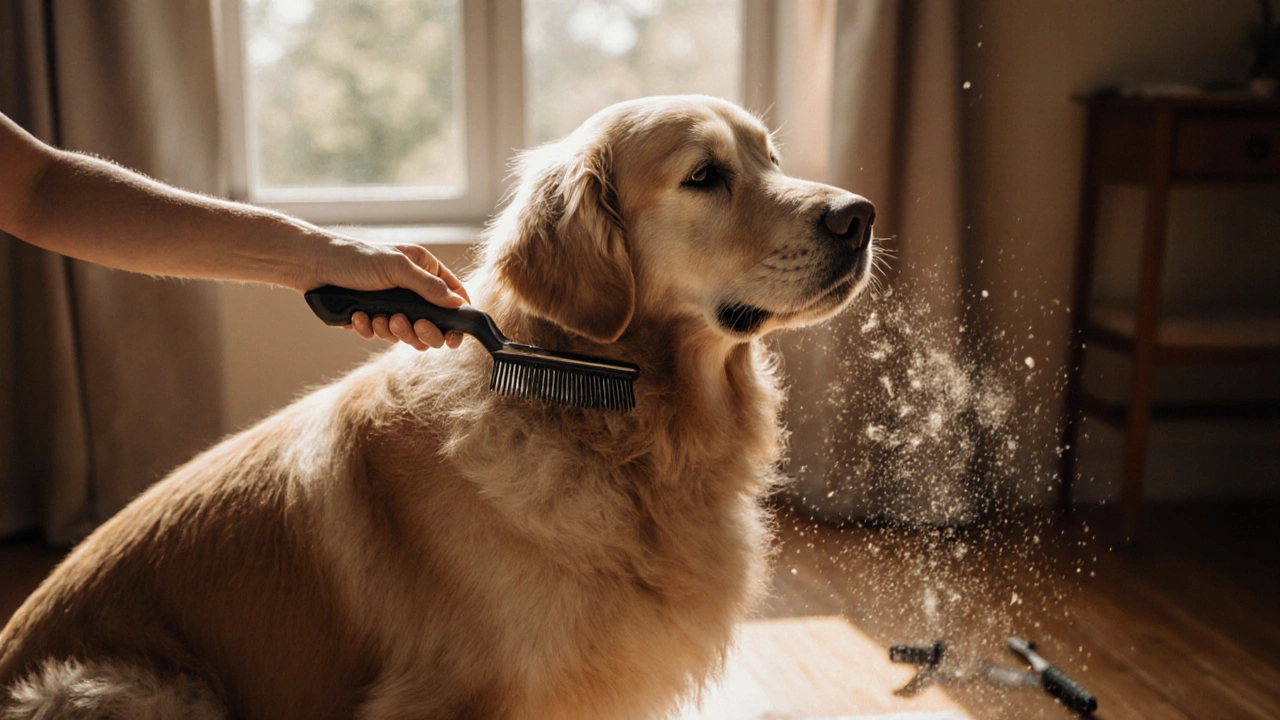Dog Grooming Frequency: How Often Should You Groom Your Pet?
When talking about dog grooming frequency, the regular interval at which a dog’s coat, nails, ears and skin are cleaned and maintained. Also known as grooming schedule, it helps keep your dog comfortable and healthy. Proper grooming frequency depends on factors like coat type, the length, texture and shedding pattern of a dog’s fur and the time of year. Using the right grooming tools, brushes, clippers and nail trimmers suited to the breed makes each session smoother and reduces stress for both dog and owner.
Key Factors That Shape Your Grooming Routine
One of the first decisions you’ll face is how dog grooming frequency interacts with your dog’s coat. Long‑haired breeds like Golden Retrievers or Afghan Hounds often need a brush session each day to avoid mats, while short‑haired breeds such as Beagles can get by with a weekly comb. Seasonal shedding spikes add another layer: in spring and autumn, a weekly or even twice‑a‑week brush can keep loose hair from turning your home into a fur carpet. On the flip side, winter coats grow slower, so a bi‑weekly schedule usually suffices.
Beyond coat length, skin health is a major driver. Dogs with dry or sensitive skin benefit from a gentler, less frequent bath routine, because over‑washing strips natural oils. Conversely, oily‑skinned dogs may need a rinse every two weeks combined with a thorough brush to prevent greasiness and odor. Nail trimming follows a similar logic—active breeds that run on hard surfaces wear down nails faster and may need a trim every three weeks, while a couch‑bound companion could be fine with a monthly cut.
Ear cleaning also fits into the grooming calendar. Breeds with floppy ears, such as Cocker Spaniels, trap moisture and debris, so a quick check and wipe‑down once a week helps avoid infections. Dogs with erect ears usually need less frequent attention unless they love the water.
Bathing Before Grooming: When It Helps and When It Hinders
Many owners ask if they should bathe before grooming, give a full wash prior to brushing and clipping. The short answer: it depends on the dog’s current condition and the grooming goal. A quick pre‑groom bath can loosen dirt, making brushing faster and revealing hidden tangles that need extra care. However, a wet coat can hide mats, so if your dog already has severe tangles, a dry‑brush‑first approach may be safer. For short‑haired, low‑shedding dogs, a light rinse before the brush is often enough; for double‑coated breeds, a thorough dry brush before any water helps avoid pushing debris deeper into the undercoat.
Bathing also influences the effectiveness of grooming tools. A slick, sudsy coat works best with a metal comb that can glide through the fur, while a dry coat pairs well with a bristle brush that lifts loose hair. Choosing the right tool for the right condition reduces the time you spend untangling and keeps the experience pleasant for your pet.
DIY Grooming vs. Professional Services
Deciding whether to handle grooming at home or schedule a professional session hinges on three things: skill level, time available and the specific services needed. Simple tasks—brushing, nail trimming, ear cleaning—are easy to master with a little practice and the right tools. More advanced work, like precise clipping of a show‑quality coat or dealing with a severe mat, often requires a groomer’s expertise. Professional grooming also includes services you might not do yourself, such as gland expression or dental cleaning, which contribute to overall health.
If you opt for a professional, discuss your home grooming routine with them. A groomer can adjust the frequency of future appointments based on what you’ve been doing at home, ensuring a seamless transition between DIY care and salon visits.
Ultimately, the right grooming schedule is a balance of coat type, seasonal changes, skin and ear health, and the tools you trust. By understanding how each factor interacts, you can set a realistic and healthy rhythm for your dog.
The articles below dive deeper into each of these topics—how to pick the perfect brush for a double coat, step‑by‑step nail trimming, seasonal grooming checklists, and when a professional groomer is the best choice. Whatever your dog’s breed or lifestyle, you’ll find clear, actionable advice to keep your pet looking great and feeling comfortable.
- Morgan Ainsworth
- 0 Comments
How Often Do Dogs Need Grooming? A Practical Guide for Every Breed
Learn how often different dog breeds need grooming based on coat type, season, and lifestyle. Get practical tips for brushing, bathing, nails, ears, and when to see a professional.
View More- Morgan Ainsworth
- 0 Comments
How Much Grooming Is Normal for a Dog? Your Guide to Healthy Coat Care
Learn the right grooming schedule for dogs based on coat type, health, and lifestyle. Get practical tips, a handy frequency table, DIY basics, and when to book a professional groomer.
View More

